All of the following stories were originally published online in The Anipal Times, a website that will be taken down on June 30, 2016. When I moved the stories, I no longer had access to the source information for the illustrations to the stories. All were published with permission or under a Creative Commons license. I heartily apologize to anyone whose photos are published here without attribution or links to their original. I will add attribution and links over time as I re-locate the original images. In the meantime, if you find your image here, please contact me to add the attribution.
Sled Dog Series:
Sled Dogs In The Northern Light
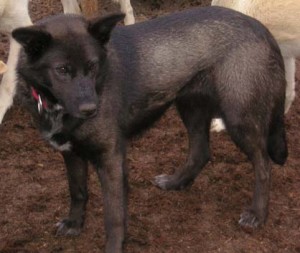
The details of the incident have been recounted in news all over North America and the world beginning with radio station CKNW, The Vancouver Sun. The Associated Press is covering the story and reports have appeared in the San Francisco Chronicle, Bloomberg, The Globe and Mail, and countless other news sources. The Anipal Times is not going to recount them here. In fact, the controversy surrounding this incident is also swirling around The Vancouver Sun and the SPCA of British Columbia in the complicated string of events.
Everyone is horrified by what happened to the sled dogs in Whistler in April 2010. However, that’s where the path of agreement about dog sledding ends and trails diverge toward wildly different conclusions about the sport and its record on animal welfare.
Historically, the picture is mixed on the welfare issue. First of all, this isn’t the only time a lot of dogs were killed all at the same time. Far from it.
The culture of dog sled racing has numerous critics. However, it’s also clear that the sled dog’s lot isn’t all bad either, and it can be very good when the human musher, the term for humans who run sleds and dogs, is a responsible guardian of the dogs’ welfare. Although a lot of members of our anipal community see the breeds that were bred to pull sleds as companion animals in towns – in fact a husky lives across the street from us in Texas – many more of these dogs are working animals, more often living like farm animals than companions. If you think about the treatment of some farm animals, the sled dog’s life can look pretty cushy in comparison.
Although comparing sled dogs to farm animals is controversial, it is not uncommon. Carol Kleckner, vice president of the Second Chance League of Fairbanks, Alaska, said that in that state, sled dogs are commonly viewed as expendable after their pulling days are over, like farm animals.
“There are MANY wonderful mushers,” Kleckner said. “People that love their dogs and take good care of them. And people that love their dogs, feed them better than they eat themselves. But, many people will not keep a dog past its working life.”
The standards for care for sled dogs both on the trail and in the kennel are, themselves, a controversial subject. Mushers who race in the Iditarod are required to belong to Mush with PRIDE, an organization that puts forth a set of standards and offers guidelines both for how to care for dogs and how to plan for crises, such as the financial crisis that hit Howling Dogs Tours Whistler.
Karen Ramstead, president of Mush with PRIDE, said, “The incident in Whistler has horrified the mushing community. It saddens me to think that people make judgments based on this incident about the whole sport.”
Ramstead has a particular reason to be concerned about the Whistler incident; the man who killed the dogs was on the board of the organization. He was swiftly removed from his position as soon as the news went public.
Ramstead said she has trouble understanding why dog sledding gets so much attention for welfare issues because when she compares it to her experiences in equestrian activities, canine obedience and dog shows, conditions for the animals in dog sledding are much better all around.
“[Dog sledding] really is a sport where the dog’s welfare is the main concern,” she said. She called the relationship between the dogs and the musher “a very deep and unusual partnership” that people who haven’t experienced it would have trouble understanding. For her, dog sledding is one of the only times in modern society that dogs get to use their gifts and participate fully in the partnership with humans.
Ramstead runs North Wapiti Siberian Husky Kennels and has finished the Iditarod, dog sledding’s most famous endurance race. She asks those of us who are not as familiar with dog sledding not to judge the whole sport based on one tragic incident.
The SPCA of British Columbia is investigating the Whistler incident, but criticism of humane conditions for sled dogs is not new. The Sled Dog Action Coalition calls for supporters to focus attention on Iditarod supporters as a lever to bring change in standards of care. PETA calls for a boycott of all dog sledding races and tours. Danyne Hoeppner posted “Prosecute for the senseless slaughter of 100 Sled Dogs” on care2petitionsite on 31 January with a goal of 7,500 signatures. By 11 February, the petition had collected 101, 524 signatures. Numerous other petitions about sled dog welfare are circulating on the Web.
People all over North America are holding vigils and calling for a boycott of dog sled races and tourist establishments, USA Today reported. Some of the many people calling for a boycott of racing and dog sledding tours may, indeed be basing their response on this single incident. However, others, including dog sledding professionals and enthusiasts have a lot more information and many of them are also calling for new standards in ethical sled dog care. In fact as of 11 Febrary, 60 sled dog establishments had applied to join the brand new Canadian/International Sled Dog Coalition. The Toronto Sun reported that the organization’s founder, Connie Arsenault, of Snowy Owl Sled Dog Tours in Canmore, Alberta, hopes this coalition will be able to hold mushers to high ethical standards and protect the welfare of sled dogs.
Like Ramstead, the Arsenault family ask us to learn more about dog sledding before concluding that the sport is cruel. They suggest instead that rather than boycotting dog sledding, we ask questions about the care, training and work practices of a particular sledding establishment. The website for Snowy Owl Dog Sled Tours offers information about what ethical work and kenneling should look like and the gives outsiders some questions to ask mushers.
It is clear that the public is aroused now to find out more about sled dogs lives and The Anipal Times will be providing additional information in a series of stories over the next few weeks, the high season for dog sled races. We will look at the life cycle of the racing sled dog from puppyhood to retirement and at the role of sled dogs in the history and society of North America. We will also provide our audience links to learn more on their own about this fascinating and controversial sport.
Sled Dogs On The Iditarod Trail
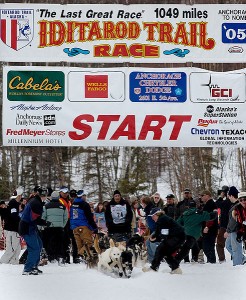
Those of us who don’t know anything about dog sledding probably know about the Iditarod Trail Sled Dog Race, a 1100-mile race in Alaska. Mushers and teams of 12-16 dogs pulling a sled will start the race 5 March. When they finish the race in Nome, Alaska, about three weeks from now the teams must have at least six dogs still working the pulling line.
The 16-dog team is the largest for North American dog sled racing. Other categories call for teams of eight dogs, six dogs, or three dogs and a human musher on a sled. Dogs and humans also race together in an event called skijoring, in which the human is on skiis and is pulled by one or two dogs. Sled dogs also pull vehicles on wheels in some races, but mostly the wheeled vehicles are used for training in the months that there’s no snow on the ground, according to Sled Dog Central.
Organized sled dog racing began in North America in 1908. Until the 1960s, almost all of the races were sprints. The sport emerged from the work of dogs, who hauled freight across the far northern areas of North America. Dog sled was virtually the only way to reach most of the settlements in the North until the invention of the snowmobile. Dogsledding as a sport emerged as a huge force as snowmobiles took over much of the work that humans had relied on dogs to carry out.
Dogs first “raced” on the Iditarod trail in 1925, when they were helping humans to fight a diptheria epidemic by getting vaccine to Nome, a very isolated city in Alaska. The idea to race dog sleds on this trail surfaced in the 1960s with a couple of short races. Although a lot of humans thought a longer race was impossible, the first field of mushers and dogs set off on the trek – more than 1,000 miles — to Nome in 1973.
Endurance races like Iditarod and Yukon Quest (founded in 1984) get most of the press outside of the dog sledding world, but dogs are still pulling in sprints and for far shorter cross-country distances as well. Now, dogsled races are held all over Alaska, Canada and in many of the lower 48 states of the United States. Racers come from all over, including surprisingly warm places like Jamaica.
The Iditarod follows one of two routes. This year, the dogs will be pulling on the Southern route, with more than 20 stops, or checkpoints, between Anchorage and Nome for a trek of 1131 miles. Mushers and their teams are required to stop at every checkpoint and must make one 24-hour stop. Two checkpoints require an 8-hour stop. The musher must carry certain supplies, including a vet notebook, eight booties for each dog and emergency dog food. In addition, the sled must be big enough to carry an incapacitated dog. Sled dogs can burn up to 12,000 calories a day while pulling, so the Iditarod rules also specify how much food mushers must have shipped to each checkpoint.
Every race is monitored by veterinarians. Mushers may be sanctioned for violating rules of dog care. Sanctions include fines, time penalties, disqualification and censure. Rule 36 presents an overview of dog care expectations for the race.

Veterinarians screen the dogs before the race starts and at every checkpoint. Dogs may use birth control drugs on the trail, but not much else, and they are subject to testing (mushers may not use drugs or alcohol during the race either). If a dog dies on the trail, the musher must carry the dog to a checkpoint, and veterinarians investigate the cause of death. If the musher has not taken proper care of the dog, the musher can be disqualified from the race.
Veterinarians who work the races generally volunteer their time and provide their own transportation to get to the races, according to DVM Newsmagazine, which reported the experiences of a Kansas vet who volunteered at the Iditarod. Pilots, also generally volunteers, fly the vets from one checkpoint to the next.
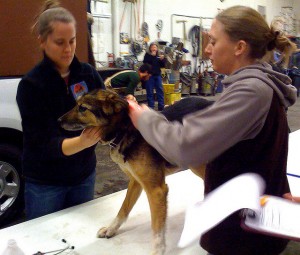
In addition to sleeping quarters in tents and community centers, the race provides veterinary equipment. All sleds are equipped with GPS, and the vets monitor their locations on computers, which helps them learn the weather conditions each team of dogs is exposed to.
Health dangers for the dogs include diarrhea, dehydration and overheating. As Vern Otte, told DVM, “They run best at night, especially if the temperature gets above zero. They tend to overheat at temperatures above zero.” Dogs who are showing signs of distress can be removed from the line and carried to the next checkpoint. If needed, the dog can be dropped from the team.
Iditarod finisher Karen Ramstead said that most mushers are overly cautious about the health of their dogs. Dogs begin a light training regime in the summer and demands increase as temperatures drop in the fall, so the dogs are prepared for the rigors of the long race. Reasons a dog might be dropped include going into heat, illness, injury or just not having fun. “Most of the dogs are ready to go back to the team after a day of rest,” Ramstead said.
The dogs are not shy about telling the human mushers when they are asking too much of them, Ramstead said. “You know what, they say, that’s too much. And they stop.”
The dogs have to trust the human, and when the human betrays the trust it takes a long time to win it back, Ramstead said.

The partnership between dogs and humans drew Ramstead to dogsledding. “In the early days, we had a partnership and we worked together with dogs,” she said. “Now, we don’t have many opportunities to call upon their instincts to get us through.”
However, Ramstead has this experience regularly on the trail with her dogs, “My job is a coach to know when each dog’s expertise is needed.”
“When we are in a storm, I’ll turn to them and say, ok guys, get us through this.”
Without the bond of trust among all of the members, human included, this kind of team work would not be possible.
Veterinarian Otte was glad that the year he volunteered none of the dogs died on the Iditarod Trail, but that’s not always the case. In fact, endurance dogsled racing attracts a lot of criticism from people who fear for the dogs’ health.
The Sled Dog Action Coalition says the Iditarod rules are inadequate to protect the dogs’ health. PETA says dog sledding is too dangerous under any conditions and advocates an end to the sport. The organization has concerns about endurance racing and the Iditarod in particular. PETA’s position pays attention both to conditions on the race trail and to breeding and training of sled dogs.
The controversy over the health of endurance sled dog racing has prompted a lot of scientific research on the physiology and diseases of sled dogs. Among the finding of this research is identification of a metabolic switch that takes place in the dogs to allow them to burn more than four times the usual intake of nutrients to power their bodies for the two weeks they are pushed to the max (look for an upcoming AT science article on sled dog physiology). The International Sled Dog Veterinary Medical Association, a group of veterinarians who are committed to the health of sled dogs and the sport of dog sledding, is a good place to start for more information about sled dog health.
The Northern Breeds That Love To Run
If you take a look at the racers in the Iditarod Trail Sled Dog Race, that started Saturday, 5 March, you’ll see a lot of different dogs pulling those sleds.
Breeds of dogs who sled are generally descended from the dogs that are indigenous to North America or came to the continent from Asia with the first people thousands of years ago. The oldest breed is the Inuit dog, or qimmiq. Some of the other traditional sled pullers are Alaskan husky and Malamute. Recently, breeders have developed the Eurohound, a cross between a pointer and a husky. Everything Husky has links to information about all Northern Breed Dogs, including sled dogs, herding dogs and hunting dogs. Sled dogs are strong and fast, generally compact. Most of the sled dogs have a double coat to protect them from harsh weather, according to Dog Breed Info.
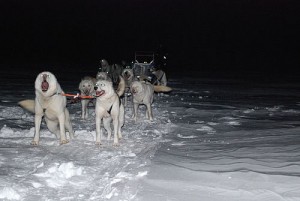
One thing all of these dogs have in common is a love of running and pulling.Technically, the Alaskan husky isn’t a breed. Alaskan huskies don’t have a registry or a standard. However, the dog is generally recognizable by appearance and specific in physiology. Huskies do have a long history, and Stephanie Little Wolf describes the blending of speed and strength that resulted in today’s husky on Sled Dog Central.
Veterinary researchers, like Arleigh Reynolds, have found that huskies are three times better at taking oxygen into the body than the best human athletes, Mark Derr reported in his book Dog’s Best Friend: The Annals of the Dog-Human Relationship. Huskies can sprint at 22 miles per hour for 20-30 miles (racing greyhounds sprint at 40 mph + but only less than one mile) and maintain a cruising speed of 15 mph for long distances.
- Iditarod Blogs
- Eye on the Trail: Official Iditarod News and Perspectives
- The Iditarod Insider
- Iditarod Live: The Sled Blog
- A Selection of Sled Dog Blogs
- DOGSLEDDN…Southern/Central Ontario Canada
- FiveSibes
- Funhogs and Fundogs
- Norh Wapiti Siberian Husky Kennels
- Off the Beaten Path
- Sled Dog Podcats
- Wandering Spirits Kennels
- Yukon Yahoos! Home of the Free Range Sled Dogs
- Zoya’s Kennel Journal
If you keep a blog on life with sled dogs or dog sled racing, or know of a good one we missed, please add it in a comment.

Alaskan Malamute is a large, powerful dog, standing about 25 inches at the shoulder and weighing in at 75 to 85 pounds. Malamutes are not as fast as some of the other sled dogs, but they can pull heavy loads, according to malamute.org Historically, Alaskan Malamutes helped to carry supplies for the camps along the northern coast. Five of the 20 dog teams that carried diptheria vaccine to Nome in 1925 included Malamutes, according to Sheryl’s Alaskan Malamutes. Mushers occasionally run Malamute teams in the Iditarod, but they have trouble getting to the finish line.
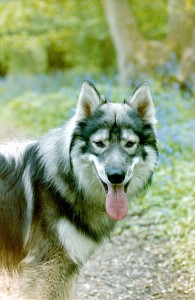
Inuit dog is the closest relative to the wolf of the sled dogs, according to Sled Dog Central, and the closest to the original Northern breed. These dogs have worked with humans from Nunavut to Greenland, and have great stamina. (Look for the next installment of this series on the history of the qimmiq in North America.) The future for sled dogs is bound up with human breeders who have blended the Northern breeds’ endurance and the racing hounds’ speed in the Eurohound, a new mix of Alaskan husky and pointer. Europeans began to breed their own racing hounds with Alaskans in the 1980s, according to the Sled Dog Association of Scotland. The Northern Alberta Mushers Association describes the Eurohound as a performance dog. Eurohounds vary in appearance and were bred and introduced to racing in Scandanavia.The Iditarod Insider presents video clips and 24-hour GPS tracking of the teams, for a fee, for fans of the race. For the duration of the race, the Anchorage Daily News profiles one sled dog per day as part of extensive coverage of the race. The feature includes video of the dog and musher, bios of the mushers and their teams, maps and even an opportunity to pick this year’s winner.
Sled Dog Retirement
Although the Iditarod race teams came through the 1,000-mile race without fatalities, sled-dog racing continues to be surrounded by controversy.
A report in the Globe and Mail suggests that discussion of sled dogs may heat up again soon when British Columbia announces the policy changes that the province is adopting in response to the killing of 100 dogs in Whistler last year.
The controversy over dog sledding has recently escalated as people wait for the publication of the investigation report and the provincial government’s response. The Animal Liberation Front claims responsibility for painting the offices of Outdoor Adventures in Vancouver, B.C., with red paint on 29 March, according to UPI.
The task force investigating the killings submitted its report to the government of British Columbia, also on 25 March. Although the report has not been published, the Toronto Sun reported that it will recommend that healthy animals not be killed. If this is the position of the task force, it is a move away from the notion that sled dogs may be disposed of as property. However, the more recent report in the Globe and Mail suggests that shooting dogs will still be allowable under the new anti-cruelty law.
As the government deliberates about its response to the Whistler incident, news is circulating that Outdoor Adventures, the company that is under investigation, is asking for help to place another 35 dogs in new homes now. The call to help went out on Pet Connection on 25 March (Whistler radio station News 1130 reported this locally).
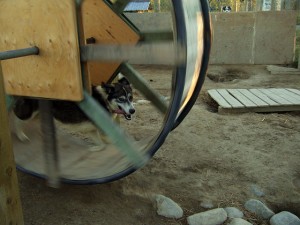
As for life on the trail for sled dogs, veterinarians have found a treatment for the digestive distress that racing dogs face in long races like the Iditarod, the Los Angeles Times reported. However, animal rights activists and animal welfare supporters continue to question the care of dogs during their working lives in racing teams and tourism operations. Even when dogs are well cared for by racers and tour operators, their fate at retirement presents thorny questions.
While we wait for further developments about the incident in Whistler and possible new rules on the treatment of sled dogs in British Columbia, the Anipal Times concludes our series on sled dogs with a look at life for the dogs after retirement.
The Best of Sled Dog Retirement
Musher Karen Ramstead, of North Wapiti Kennels, has a dog development plan that eases champion racers into retirement. When the racers get older and slower, she puts them to work training the puppy teams. Puppies are slower than mature racing teams, and the older dogs teach them how to work as a team and how to deal with the challenges of the trail.
When it’s time for a dog to retire fully, North Wapiti Kennel has what Ramstead calls a Geriatric Park where the dogs continue to live with their pack. Retirees and team members who have gone over the rainbow bridge also figure highly on Ramstead’s website.
Ramstead also tells the story of her efforts to give her best buddy Grover what she imagined to be a cushy retirement for him, in the house. First, Grover drove the puppies really hard. He didn’t want to let them take breaks even, so he could prove that he still belonged on the racing team. Then, Ramstead tried to move him into the house with her human family, but he pined for his teammates.
“The only way we could get him to eat was to take him to his dog house,” she said. “Where he wanted to be fed was with his teammates.” Although she really wanted to have Grover with her all the time, she had to acknowledge his preference to stay with his dog pack.
Rescue and Rehoming
Ramstead and her dogs offer an example that shows the bonds between the musher and the canine team members is deep. Ramstead makes a puppy pad to grave commitment to her sled dogs. But as we saw with the Whistler incident, life isn’t always as secure for sled dogs.
Carol Kleckner of Second Chance League in Fairbanks, Alaska, said, “I do want to go on record saying that there are MANY wonderful mushers. People that love their dogs and take good care of them. And people that love their dogs, feed them better than they eat themselves. But, many people will not keep a dog past its working life.

“The sled dog in Alaska is pretty much a farm animal. People can say they love their dogs, they can treat them well and feed them the best food. But when the dog stops working, gets injured to just gets too old to pull sleds then I would say the majority of mushers kill the dog. They really aren’t companion animals.”
Alaska has a substantial problem dealing with sled dogs whose guardians do not make it as professional mushers or as tour operators. People don’t always know what they are getting into and don’t always have adequate resources to care for a large number of dogs. Sometimes dogs run into trouble just because the humans lose interest in the sport.
“There are many mushers in Alaska that get into the sport and don’t have a clue,” Kleckner said. “Or they get bored, or they breed too many dogs, then care goes down, they stop running the dogs and just don’t give them much attention.”
“We do have a bad problem in Alaska with starving dogs, bad care and inhumane treatment,” Kleckner said. “Our laws for animal cruelty are almost nonexistent. And this land is so huge, that people can almost hide in the woods with their emaciated team and no one would ever know.”
Also because Alaska is also sparsely populated, rescuers have trouble finding homes for all of the redundant sled dogs.
A quick Google search finds rescue organizations specializing in sled dogs in Canada, in every U.S. state where dog sledding is popular and even in some that are too far south to have an active sledding season. Second Chance is one of several rescue organizations in Alaska, where dog sledding is most active in the United States. Kleckner and her colleagues at Second Chance Leauge work to socialize dogs for rehoming and also make careful matches of dogs with humans whose lifestyle will best match the needs of high energy dogs.
“ The sled dog makes an excellent pet. But, they do need a job,” Kleckner said. “They love to run. We always stress to people that adopt an SCL dog, that these dogs need exercise. Sometimes it doesn’t take much! An hour run each day will usually make an ex-sled dog very happy. We try to adopt the dogs out to very active people. Running, biking, skiing, hiking, anything they can do with the dog.”
Some sled dogs, however, do enjoy a lazy retirement, Klecker added. “There are many huskies that adapt happily to a house dog. Walks around the block or playing a good game of ball keeps them happy. We have many indoor huskies and they love the house, are easily housebroken and are a dog that generally gets along with other dogs.”
Photos by Jim Rettig and Yukon White Light used under Creative Commons license.
Animal Abuser Registries Might Deter Cruelty
My neighbor kitten Tiger got out one night and hasn’t been the same since. That night, someone cut off his ears and his tail. Tiger’s human mom told the police she saw two men drinking at a nearby picnic table. When officers looked around, they found blood in the yard and Tiger’s tail in a trash can. Police arrested one man who is suspected of torturing Tiger, but another man escaped, the Seguin Gazette-Enterprise was first to report on 24 September.
The brutality of Tiger’s wounds surprised even the police officers. “I’ve seen animals shot, hung and run over,” Detective Curle Price told the Gazette-Enterprise. “But I’ve never seen one mutilated like that. I’m an animal lover, and I can’t understand why anyone would do that to a kitten.”

Tiger’s mom said she is grateful to the police for taking her complaint so seriously. “Animals have no voice; no way of communicating with us,” Norma Sanchez told the Gazette-Enterprise. “We must take care of them. Right now, Tiger’s still hurting. He’ll barely let us touch him. I want to thank the police. I’m glad they caught him, and hope they find the other one.”
Tiger came to live with his forever family only three weeks before. His mom told my human that she picked Tiger out of the litter because his ears were so cute and made him look like a big cat. Tiger goes to my vet, which is where my human first met him, the morning after he was tortured. (I wrote about this meeting on my blog.) His mom was carrying him out of the vet’s office. The vet told us that she had done a good job of giving the kitten first aid. Tiger has been back to the vet, and a local nonprofit called ARF is helping to pay his vet bills, and our vet underwrote a lot of the cost of care. Some anipals have contributed to ARF’s fund and sent gifts to Tiger as well. If you want to contribute, specify that you want to help Tiger on ARF’s online donation page.

Dr. Larry Helms, one of the vets at Seguin Animal Hospital, treated Tiger.
“The mutilation done to Tiger duplicates that done to many pitbulls and other fighting dogs,” Barbara Upper of ARF said. “Until there is a cultural taboo defining these bloodsports, until there is an urge for enforcement of protection laws, until we call sadism what it is, we will continue to get what we tolerate. Tiger is a victim of our acceptance of brutality in our midst.”
The detective found the arrested man’s explanation that he and his cousin were drinking and the idea just “came into their heads” inadequate. So do I. I hope that the district attorney prosecutes the guy they did catch and that he is convicted. If the man is convicted, the law in Texas makes torture of a non-livestock animal a state jail felony that carries a punishment of no more than two years incarceration and a fine up to $10,000, according to section 42.092 of the penal code.
Some humans, like Upper, in Texas and other states don’t think the law goes far enough to deter animal cruelty. Some Texas lawmakers plan to introduce a bill that proposes a registry of animal abusers on the same model as the list of sex offenders that the state currently provides, according to KXAN in Austin. The law, if passed, would require adults convicted of felony animal cruelty to register (although most cruelty convictions in the state are for misdemeanors). If this law were to be enacted in next year’s legislative session, it could be the first statewide registry of its kind in the United States. Suffolk County, on Long Island in New York, however, has already started the very first local animal abuser registry.
The first animal abuser registry in the United States
The Suffolk County government wants to deter animal abuse by requiring adults who are convicted of felony animal cruelty to register annually for five years. The county Society for the Prevention of Cruelty to Animals will maintain the registry of names, addresses and photos of convicted offenders, Newsday reported the day after the law passed on 12 October. The list will be online and open to the public, Newsday reported.
The Suffolk County SPCA predicted, based on historical data on prosecutions for animal abuse charges in the county, that the registry will probably list several dozen offenders. As of September, Newsday reported, several hundred animals had been victims of cruelty in Suffolk County this year.
The state legislature in New York has a similar measure under consideration, WHAM reported, but this bill proposes that the list be available to prosecutors, law enforcement officers and adoption agencies only. Law Blog of the Wall Street Journal reports that the Animal Legal Defense Fund is campaigning for a national registry.
Efforts to create statewide registries raise controversy
Several states, among them Louisiana, Rhode Island, Colorado, Tennessee and California, have considered and defeated similar proposals to create registries of animal abusers. In addition to the proposal in Texas, Connecticut is also considering a statewide registry of convicted animal abusers, the Newtown Patch reported.
The New York Times reported that opponents of the bills in Tennessee and Colorado had concerns about the cost of maintaining the registry. The Tennessee General Assembly estimated that a registry would cost about $26,000. Colorado also studied the potential cost of a similar registry and estimated it would cost about $18,000 in the first year and $11,000 annually after it was fully established. Suffolk County is at least partially funding its registry by charging registered offenders a $50 annual fee.
Links between animal abuse and violence against humans
“It’s a known fact,” Roy Gross, Chief of the Suffolk County SPCA, told the North Shore Sun as reported in the Huffington Post.“People who hurt animals hurt people too.”
A Suffolk County legislator told the Huffington Post, “Almost every serial killer starts out by torturing animals, so in a strange sense, we could end up protecting the lives of people.”
The FBI uses animal abuse as an indicator of potential for future violent behavior, the Times reported.
Research shows quite conclusively that animal, domestic and child abuse are related. For example, the Times reported, a study found that women who have been abused are 10 times more likely to report that their abusers have hurt or killed pets than are women who are not subjected to domestic violence. Another study found that pets had been abused in 88 percent of homes in which children suffered physical violence.
Based on studies of this sort, some U.S. states have enacted laws that require officers who work with animal abuse and child abuse to share information. The proponents of animal abuser registries rely on much the same logic in arguing that states should establish registries regardless of the cost. Registry advocates hope that the lists will be useful in preventing child abuse as well as in thwarting convicted abusers from adopting animals.
The idea of registering animal cruelty offenders generates a lot of controversy wherever and whenever it comes up. Insufficient evidence exists to determine if registering offenders, whether confidentially or publicly, will help to prevent animal abuse. I don’t claim to know how to solve this problem, but I do hope that humans will figure it out. For the sake of kitties like Tiger and all the thousands of other kitties, dogs, children and adult humans who are tortured and abused, humans need to stop the cycle of violence.
My human helped me with some of the research for this article because she is a skilled user of the Lexis-Nexis database. Reports on the cruelty against Tiger appeared in the Seguin Gazette-Enterprise, Seguin Daily News, San Antonio Express-News, KSAT 12, FOX 29 and others. Amber Stubbs-Aydell took the photographs of Tiger and gave us permission to publish them.
Earthquake, Tsunami, Anipals, Animals

Around the world, we have been watching and listening to the news as the earthquake in Japan turned into a tsunami and then morphed into concerns for the stability of nuclear power plants. We watch and wait as aftershocks rattle Japan again and again. We worry about our relatives and friends in Japan and seek them out online and on the phone. We find some of them are safe, at least for now.
Many, many people are still missing in the aftermath of the quake, tsunami and aftershocks. Search and rescue dogs flew from the United States to Japan on Saturday. The dogs are from Search Dog Foundation (SDF) in California. They are getting a good night’s rest after the long flights and will soon begin work. Follow @searchrescuedog on Twitter for timely updates. SDF will get help to pay for this deployment from Charles Annenberg Weingarten of Explore.org. Weingarten promised to donate $1 for or every person who “likes” the Facebook page Dog Bless You, up to $100,000. I first learned about the challenge on care2.com. Lots of humans tweeted and FB shared the link and met the challenge!
Our community cares about the humans. We also have a special interest in the animals, and many of us want to be ready to help however we can. We hear little about Japan’s animals in the news, which is typical in major disasters when the human community has a lot on its hands just to find and care for the humans. Animal Refuge Kansai, an organization devoted to providing refuge to animals, places the first priority on work with humans. ARK took in 600 animals after a major earthquake in 1995, and based on that experience, expects to care for more homeless pets after the initial work to save human life and repair infrastructure is well on its way. In 1995, most of the pets came to them from emergency centers for humans.
We Also Worry About Our Anipals
The AT identified as many anipals in Japan as we could and sent messages of support to them. A number of pals have responded that they are ok. We have heard from @Aska_Alaska, @VanillaTheDog and @kurousanohaha.
@Kuronekotango just checked in and said, “We are good, thank you! Starting to think Mao is a quake antenna tho, acts strange & few mins later there is shaking somewhere.”
@IamButton has been in contact with members of her family in Japan, too. We have also been in touch with @PepiSmartDog, whose mom is on a ship that was in a Japanese port the night before the earthquake. She is ok, cold and cruising in Russia now.
If you have heard from any other anipals in Japan, please leave a comment. If you are an anipal or human reader of The Anipal Times in Japan, please leave us a comment here or send a tweet to @CheshireK and let us know you are safe. We are all here rooting for you and ready to help when and as we can.
News about animals in the earthquake- and tsunami-affected areas
Anipals who know Japan well have been especially concerned for the elderly people and cats of Tashirojima (Cat Island). @DaneRay was the first to tell me about this island and to express concern for these people and cats who live at sea level directly in the path of the tsunami. It appears that Tashirojima did sustain considerable damage, and that the community has survived. The source said that Japanese military helicopters have landed on the island. We aren’t in a position to check on the immediate source of the report, but we got it from The Cat’s Meow via a comment on The Conscious Cat, with much thanks to @Skeezixthecat for posting the link.
Although the news focuses on the human cost and resilience of the Japanese people, at least one Japanese newspaper has reported on a reunion of a dog and his human. We got this from World Vets Facebook page, I can’t tell you more about the story because unfortunately, I can’t read Japanese. The picture World Vets shared tells us enough to share their great relief.
How to Help
Behind the continuing aftershocks and work on nuclear plants that is dominating the news, animal welfare organizations are planning for assistance in Japan. Operation Fuzzy Mice is listing all of the animal welfare organizations she can find out about that are providing services or funds for recovery to Japan. Tom Collins, a Blogpaws blogger whose son is in Tokyo, is also pulling together information on where to donate. I know that I’m not even close to listing all of the efforts that are in planning or underway now. Please, leave a comment and add relief efforts for animals that I have omitted.
Search Dog Foundation is already on the ground. World Vets is preparing to deploy a team of volunteer veterinarians to Japan and is working with local animal welfare groups near the earthquake’s epicenter to begin to rescue animals. They have a donation page to help fund the deployment and veterinary supplies for the earthquake-affected area.
American Humane Association is also taking donations and working with other groups to develop a strategy.
Three Japanese organizations have formed Japan Earthquake Animal Rescue and Support. The organizations are HEART-Tokushima, Animal Garden Niigata and Japan Cat Network. Japan Earthquake Animal Rescue and Support is accepting donations and will be working together to provide resources for animal rescue and support.
I am helping a group of anipals’ humans to raise money for the relief effort through an auction on my blog. The humans, including mine and @MaggieTKat’s and @DashKitten’s are making new work inspired by Japan. @Boomiethecat’s mom will offer one of her handmade quilts as well. We are hoping to be ready to start the first auction on Wednesday, March 16. If any other anipals are planning fundraisers, please leave a comment or send me a tweet.
Note: Brand new AT reporter @DaneRay really earned his treats today. His reporting contributed greatly to this story. Look for more stories on Japan and earthquake response from @DaneRay.
Art For The Human Animal Connection: Okey’s Promise

Anipals have an amazing opportunity to help artist BZTAT raise enough funds to create an important new public art project and to offer humans all over North America the challenge to open their hearts.BZTAT is well known among anipals and humans alike as an artist with an amazing heart. Her latest project aims to share that heart with a broader audience through a series of public art projects intended to raise awareness about the vital connection between domestic and animal abuse.
Okey’s Promise: Art for a Cause will bring BZTAT’s art and her humanitarian vision to six cities. By pledging our support to Okey’s Promise on the Kickstarter website, we can help her raise the $6000 she needs to get started painting!
A group of anipal artists and their humans decided to share their own art to pull together a big anipal pledge block through an online art auction. The auction was @MaggieTKat’s idea and I offered the auction space on Cheshire Kitten Loves Karma (yes, that’s my blog).
@Georgetheduck’s Typist, @MaggieTKat’s mom, my Robin, @Cokiethecat’s mom, @pasikas and even @BZTAT herself have contributed artwork for the auction.
The auction begins TODAY.
Take a hop over to Cheshire Kitten Loves Karma to see the pieces that will be auctioned beginning this evening at 9 pm CDT. Bids will close 24 hours after they start and another piece will come up for bid. Leave your bids in the comments beginning with the opening bid and going up by multiples of $5 as you raise the stakes and funnel more precious resources to Okey’s Promise. Dates for the auction are September 16-18 and 23-25.
This weekend we have three auctions, then we’ll make a pledge to Okey’s Promise on Kickstarter. The bidding will start up again on Thursday next week for three more days. At the end of the second weekend, we will pledge again on Kickstarter.
You can help BZTAT raise the $4550 she needs to get to her $6000 minimum by 4:02 p.m. EDT Monday, September 26, by sharing in our auction or going right to Kickstarter and making a pledge of your own.
I bet my human a box of We Pity the Kitties salmon treats that we anipals could outpledge her. Come on, pals! I promise I’ll share when I win those treats.
Associate Editor @MaggieTKat assisted with this article.
From A Hoarder In Texas To Homes In The North

Dogs from a hoarding situation in South Central Texas will be making their “Guadalupe Getaway” next weekend when they hit the road for New York with five dedicated humans who are doing everything they can to improve life for these dogs and for all the companion animals in Guadalupe County, Texas.
After months of working with the situation that one of the women of Animal Rescue Foundation, a non-profit in my town, noticed while driving in the rural area of the county, 33 dogs of the dozens who are currently living at a house with no running water or electricity, will be leaving the South and heading for Yankee homes.
ARF has been working with the owner of the dozens of dogs and cats to encourage her to accept assistance with the animals. Some of the dogs have been placed around here and all of the cats (“Even the pregnant ones,” the founder of ARF told me), but our area has a huge overpopulation of dogs and cats and it’s not likely many of these dogs would be adopted.
Rather than give up on finding homes for these dogs, ARF came up with the idea of taking the healthy, adoptable ones North. By working with Best Friends Animal Sanctuary’s local group in New York, and a lot of their friends, the dream of giving the dogs a second chance is coming closer to reality.
There’s a lot of work to do to get the dogs ready for the trip. A local veterinarian will be giving them a health check Monday and making sure they are all up-to-date on their vaccinations. ARF is asking for help from other local volunteers to collect bedding, collapsible crates, towels, collars and leashes.
Someone donated a motor home for the trip, but the Guadalupe Getaway won’t get underway until ARF buys tires for the vehicle.
The people of ARF are also asking for assistance from supporters who live along the route they will take from Guadalupe County, Texas to New York. Just five people will be traveling with approximately 33 dogs, so they would love to meet folks who can help walk the dogs on the rest stops along the way.
While rest stops aren’t set in stone yet, the route from Texas starts on I-10 through New Orleans. They’ll head north on I-59 through Mississippi and Alabama, passing through Birmingham, and on to Tennessee. They’ll pass through Chattanooga and Knoxville on I-81, which also takes them through Virgina and into Pennsylvania. In Pennsylvania they’ll turn onto I-78 and pass through Harrisburg and Allentown and on into New Jersey before they reach New York.
Anybody who would like to connect with the Guadalupe Getaway dogs and the humans of ARF can leave a comment on this story, or if you want more information, contact my human at rbisha@sbcglobal.net, and she’ll connect you with the expedition. I’ll share info as it comes in on my own blog, Cheshire Kitten Loves Karma while the dogs are traveling.
Of course, an operation like this can use financial support as well. Anybody who would like to donate to make the Guadalupe Getaway possible for these dogs can donate online. ARF-Texas is a 501(c)3 nonprofit corporation, and all donations are fully tax deductible.
After Lennox
The international effort to gain a reprieve for Lennox, who was impounded and destroyed by the Belfast City Council, has ignited the effort to revamp laws dealing with so-called dangerous dogs.
The authorities couldn’t tie Lennox to any dangerous behavior before he was impounded. Just being taken for a pit bull was evidence enough to kill him.
Breed-Specific Legislation
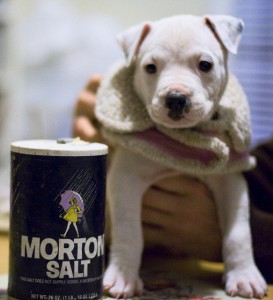
This kind of law, known as breed-specific legislation or BSL, is a frequent response to the problem of dogs who endanger people and other animals. BSL bans keeping certain breeds of dog that people tie to violent behavior in a city, state, province, or in the case of the U.K.’s dangerous dog act, an entire country. Some of the dog breeds that have been banned are or have included American bulldog, Australian cattle dog, doberman pinscher, fox terrier, labrador retriever, pug and rottweiler according to Dog Politics. The list Dog Politics compiled includes 75 breeds.
The case of Lennox illustrates just how difficult it can be to decide a dog’s breed from just looking at him. Belfast City Council argued that Lennox was a pit-bull type dog, which is banned in the United Kingdom, while the family said he was not. In fact, research, including a study conducted by scientists at Maddie’s Fund, University of Florida and Michigan State University, shows that visual identification of dog breed is unreliable at best. Shelter staff identified 55 of 120 dogs as pit bulls, but DNA analysis confirmed that only 25 of the dogs actually were pit bulls. The staff missed some dogs who turned out to be pit bulls, as well. In all, the people identified only eight percent of the pit bulls by sight.
Such research lends support to the work of grass roots activists and expert dog trainers who argue that laws should focus on dog behavior rather than breed identity and that the responsibility for dog behavior should be placed on humans.
Victoria Stilwell, of Animal Planet’s It’s Me Or The Dog, and who tried to gain release for Lennox for export from the U.K. to the United States, strongly advocates for legislation that focuses on dog behavior and the humans who are responsible for the dogs. Stilwell played a role in the drafting and adoption of such a law in the U.S. state of Georgia.
Georgia’s Responsible Dog Ownership Law
The State Bar of Georgia provides a concise summary of the “Responsible Dog Ownership Law.” The law provides for two designations based on a hearing to consider a dog’s behavior: dangerous and vicious.
Dogs can be classified as dangerous if they bite but don’t cause serious injury, aggressively attack in a way that poses threat of serious injury to a person or if they kill a pet animal while off their owner’s property. They can be classified as vicious if they cause serious injury to a person or causes serious injury to a person who is fleeing potential attack.
Owners of dogs declared dangerous must register their dog every year, lock the dog in a secure enclosure on their property, post a warning at all entrances to the property. When a dangerous dog leaves the owner’s property, the dog must be on a leash (less than six feet) and be under control of a person who is capable of preventing engagement between the dog and another animal or person. If the human fails to comply with these and a few other requirements, the dog will be confiscated. Violation of the requirements or failure to surrender the dog is a misdemeanor.
Declaration that a dog is vicious results in similar requirement, although more stringent — including a muzzle along with the leash when leaving the owner’s property — and with violation classified as “high and aggravated misdemeanor.” In addition, a human may not own more than one vicious dog and must carry at least a $50,000 liability insurance policy. A dog declared vicious may not be left unattended with a minor. Ever. Also, vicious dogs can’t be sold or given to anyone.
A second offense of a dog owner under the Responsible Dog Owner Law will be considered a felony.
A dog who is found to have seriously injured a human for a second time shall be euthanized. The law also allows a judge to find that there is no adequate way to control a dog. In such cases, the judge may order euthanasia if the owner has been convicted of a crime related to the dog or if a local government has filed a request for euthanasia of the dog.
Ownership of a dog is defined to hold parents responsible for their children’s dogs and to place responsibility on whoever is in control of the dog at the time of the attack. That means humans can no longer claim the dog who hurt someone belongs to someone else to avoid responsibility.
Other Relevant Cases
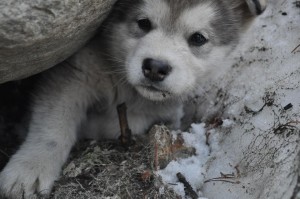
An international campaign is organizing to exonerate Shadow, now an adult Alaskan Malamute found responsible for a bite in Canada. Supporters question the evidence against him.
Other states and cities in the U.S. South still have breed bans, but some are beginning to reconsider them. KNWA reported that West Fork, Arkansas, decided 11 July not to ban pit bulls after a long controversy. The mayor of the Southern city said the council would rewrite the law to focus on owner responsibility.Meanwhile, another accused dog is gaining international attention. Shadow, an Alaskan Malamute, has been found responsible for biting a woman in British Columbia, Canada. Shadow’s supporters argue that she didn’t bite the woman. Instead, they contend, the woman’s own dog bit her after she kicked Shadow in the head. Supporters have started a Facebook page and more than 9,000 people have signed a petition to advocate that Shadow be exonerated.
As in the case of Lennox, advocates have raised serious questions about the conditions of Shadow’s confinement, which has lasted 15 months so far. The events in Kelowna, B.C. have been covered by Global News.
I would like to thank Operation Sled Dogs for alerting me to Shadow’s story. The photo of Shadow as a puppy is published with permission from the Facebook page Shadow vs RDCO.
The photo of the pit bull puppy was originally published by greenkozi on Flickr and is used here under a Creative Commons License.
World News Confirms: Anipals are Vital to Human Society
I don’t know about you, but most of the cats in my house don’t know how to read. I am a literate kitty, so I scan the humans’ newspapers, magazines and Web sites for news that my kitty family would find interesting and then I read the stories to them. I’m not going to read the stories for you because this isn’t a podcast, after all, but I will summarize some of the most important news about animals that is circulating among the humans.
Dogs got a lot of attention in the news this month. The most important dog story in the New York Times said that the humans are still debating about when and where dogs decided to stick around with humans instead of eating them. New research using DNA of dogs and wolves shows that dogs moved in with humans in the Middle East about 15,000 years ago. The last best research said what the humans call “domestication” happened in East Asia. The scientists who did the last research point out the flaws in this research and vice versa. Whether they joined them in East Asia or the Middle East, dogs still think humans deserve canine assistance and companionship.
New Yorkers benefit a lot from the well developed sniffing capacities of dogs. We all know about bomb dogs, drug dogs and dogs who help rescue people, but New York’s dogs are helping with another problem entirely: bedbugs. Dogs can sniff out one live bedbug or even one EGG. Apparently, puggles are good at sniffing out bedbugs – at least Cruiser the puggle is. Cruiser, who was featured in the New York Times story, is making a good living with his human doing inspections of houses, apartments, hotel rooms and any other sort of place. Dogs are very nice to help humans out in all the ways they do.
Humans really value our companionship too. We know how much our humans hurt when one of us crosses the RB, new research in Great Britain demonstrates just how important we are. The Daily Mail reported that more than half of the humans surveyed in Great Britain said that they never stop feeling grief after the loss of a beloved pet. About half see us in the same category with close relatives and a third rank their pets with a spouse or parent. We really are part of the family.
Pethealthcare.co.uk reported that Member of Parliament Nigel Waterson, also in the United Kingdom, has asked the Parliament to consider making it easier for older people who can’t stay in their own homes to keep their pets with them. The Society for Companion Animal Studies has been working to raise awareness of the strong bond between us and our humans and how healthy we are for humans. MP Waterson has really shown a lot of support.
North Americans recognize our importance too. A fire destroyed the home of a family in Fon du Lac, Wisconsin, according to that city’s newspaper, The Fon du Lac Reporter. Although all the humans escaped the burning building, they thought their pets had not made it. Imagine their surprise when someone called to say that he had seen their kitty Pooky in the shell of the house. The firefighters told the family that because animals are low to the ground, they can sometimes survive fires when humans wouldn’t be able to. Pooky’s mom got up the guts to go back to the house, and it’s a good thing she did because Pooky was there!
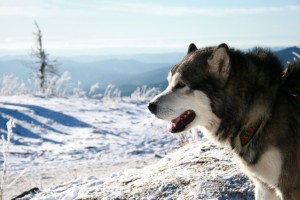
Although living in a house is usually safe, some dogs get involved with their human’s dangerous pastimes, like sled racing. The official veterinarian of the Iditarod Trail Sled Dog Race heaved a sigh of relief this year when all 1,100 sled doggies who started the race were still around when the last of the competitors crossed the finish line. The Anchorage Daily News reported that this is the first time since at least 1986 that all the doggies lived through the race. This race raises a lot of controversy, and this year the dogs were particularly well monitored. Also, the weather was cold so none of them overheated. The trail was good, so a lot of the sleds finished really fast. The race organizers gave an award to Sebastian Schnuelle, the human who took the best care of his dog team.
Lance Mackey and his team finished the race first in just less than 15 hours.
Congratulations to all those Iditarod dogs who have supercanine endurance!
Animals aren’t only strong and companionable, we have a lot going on in our brains that humans just don’t know about yet. Thank goodness some of the humans are trying to figure us out. TIME magazine reported a story on one of my favorite topics, animal consciousness. TIME reported on research humans are conducting to figure out if animals commit suicide. Studies of dolphins, for example, reveal that they do sometimes decide to die. Researchers aren’t sure what to make of this sort of behavior, but it does indicate that we have way more complex thinking than some humans want to give us credit for.
I also follow the research on animal emotions, altruism among animals and communication between animals and humans. I read a cool story in US News and World Report about bonobos, primates who live near chimpanzees in Africa but have very different social rules. Some humans are studying bonobos because theirs is just about the only society on earth that is peaceful. Scientists noticed that bonobos share food with each other and spend a lot of time trying to make other bonobos happy, unlike chimpanzees who are often trying to impress each other with their strength and fighting. If given a choice to eat all the food or share it with another bonobo, a bonobo will always share. Bonobos are very friendly. I would like to meet a bonobo.
Some news is really important to our health. We’ve all seen the stories about pets who have been hurt by non-prescription flea and tick repellants. USA Today reported that the US EPA will be requiring clearer labeling to help humans avoid dangerous uses of these products. In the meantime, it’s also important to note that small dogs can be more affected by the products and cats often don’t respond well to products meant for dogs. Humans, no matter what country you are in, read the directions carefully before using ANY product on (or in) your pets.
Finally, if your humans are planning to take you to Israel, make sure they check on the requirements for you to get into the country. Haaretz reported that Israel’s Agriculture Ministry is dealing with an outbreak of rabies and has made stricter rules for companion animals entering the country.
